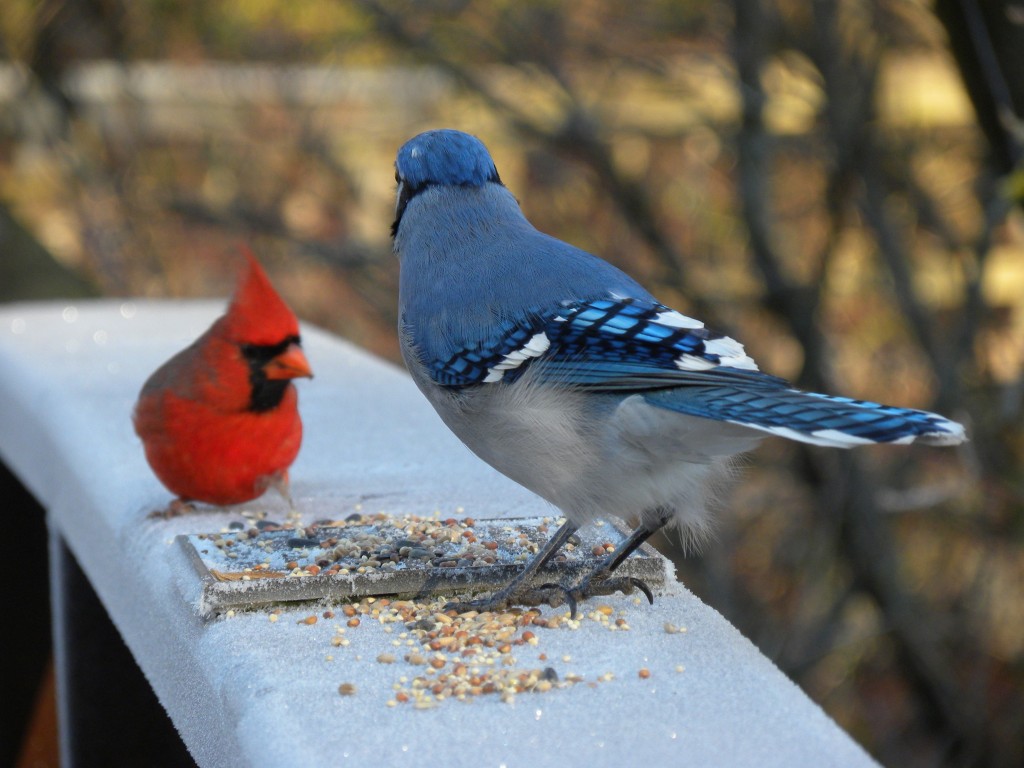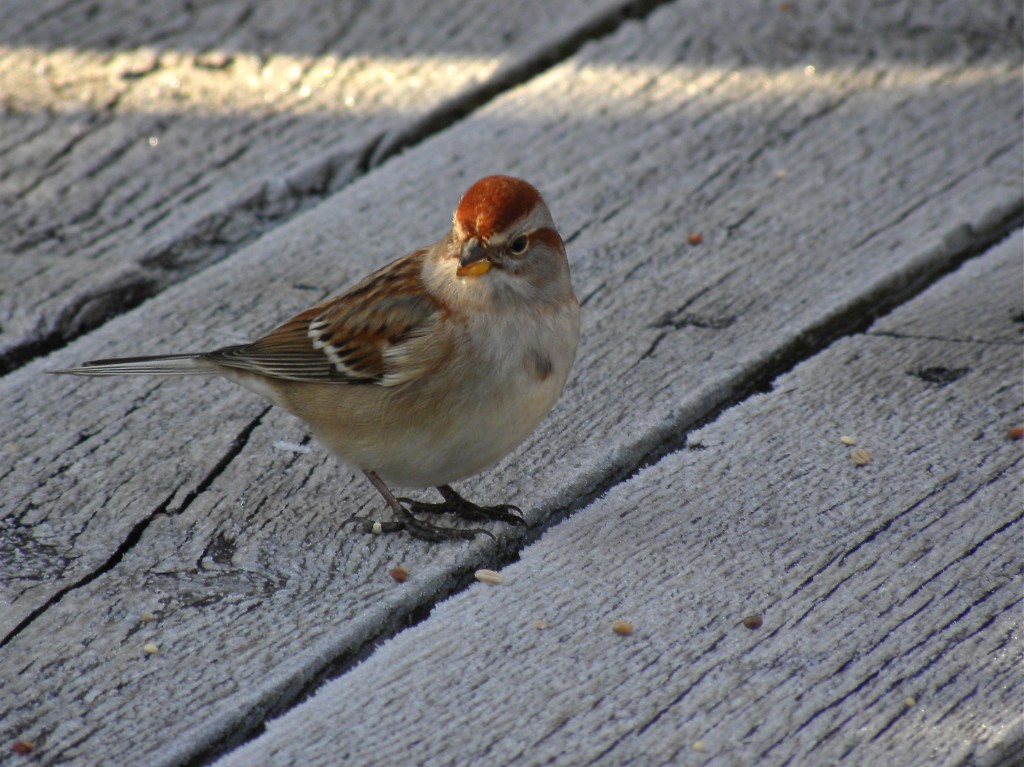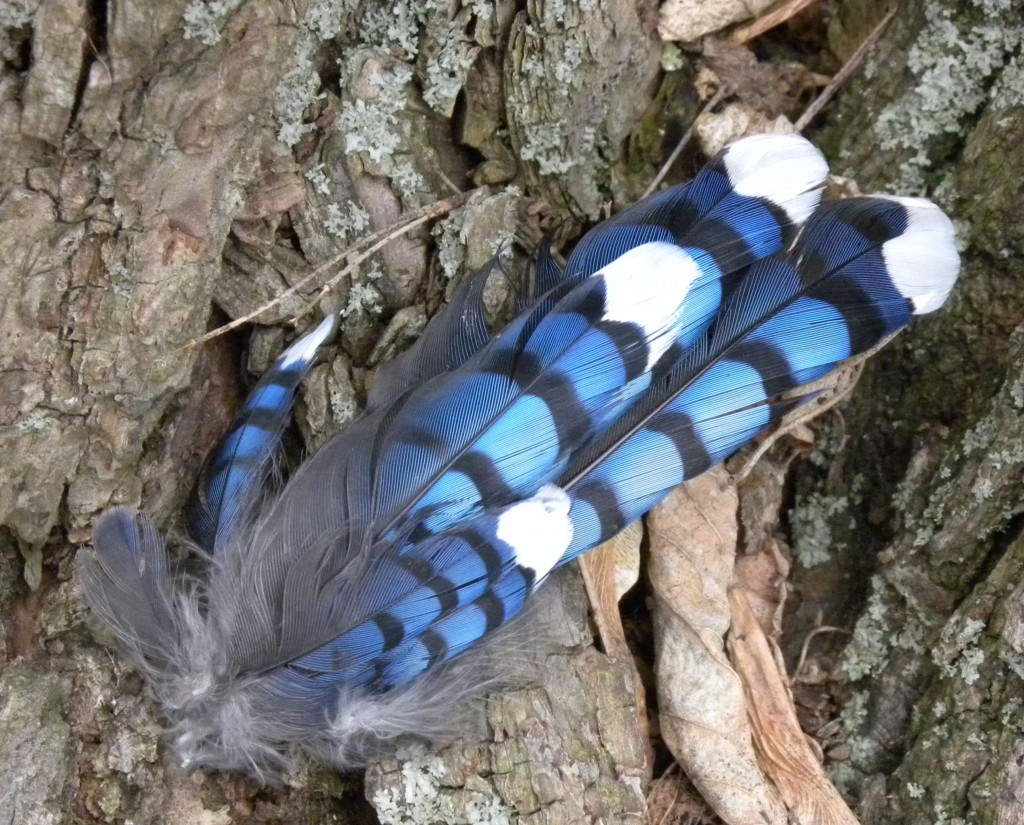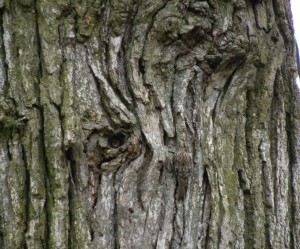November 10 2014,. Hamilton Harbour, ON. Several years ago, when on-line reports of bird sightings were a new thing, there was a bit of a race to report the first singing Cardinal of late winter/early spring. Year over year the dates crept earlier: Mid-February, Early February, Mid January and so on. And then one year the earliest report came sometime in December and, well it all became a bit silly. And besides, the various on-line bird group systems had become more serious and focused. No-one seems to care about early dates for cardinal song anymore.
Well today as I walked along a well used bike path squeezed between a railway marshalling yard and the shoreline of a large harbour, I heard a Northern Cardinal singing: “PEETA PEETA PEETA – Teww tewww.”; just briefly. It was really quite heartwarming, an advance preview of the next spring so far off. And as I was musing that perhaps I could report this record-early (or record-late) cardinal song, it continued on – but all wrong! It was a Northern Mockingbird, doing what they do better than almost any other bird: mimicking.
I could hear it rather faintly, yet it was obviously coming from this small offshore island, which was not very many yards away.  Mockingbirds do this, they’ll run through their full repertoire, but softly as if to keep it to themselves for comfort; or maybe they’ve been told to practice every day. I wrote down some of the song’s other notes as follows: “puurrr puurr, sheek sheek, Kingfisher rattle, peeew peeew,ch ch ch ch wrrr wrrr.” You really had to be there.
Mockingbirds do this, they’ll run through their full repertoire, but softly as if to keep it to themselves for comfort; or maybe they’ve been told to practice every day. I wrote down some of the song’s other notes as follows: “puurrr puurr, sheek sheek, Kingfisher rattle, peeew peeew,ch ch ch ch wrrr wrrr.” You really had to be there.
They can be quite skittish when they think you’re looking for them, or even worse at them, but as I moved closer it emerged from among the tangle of wild rose to allow me a few photos.
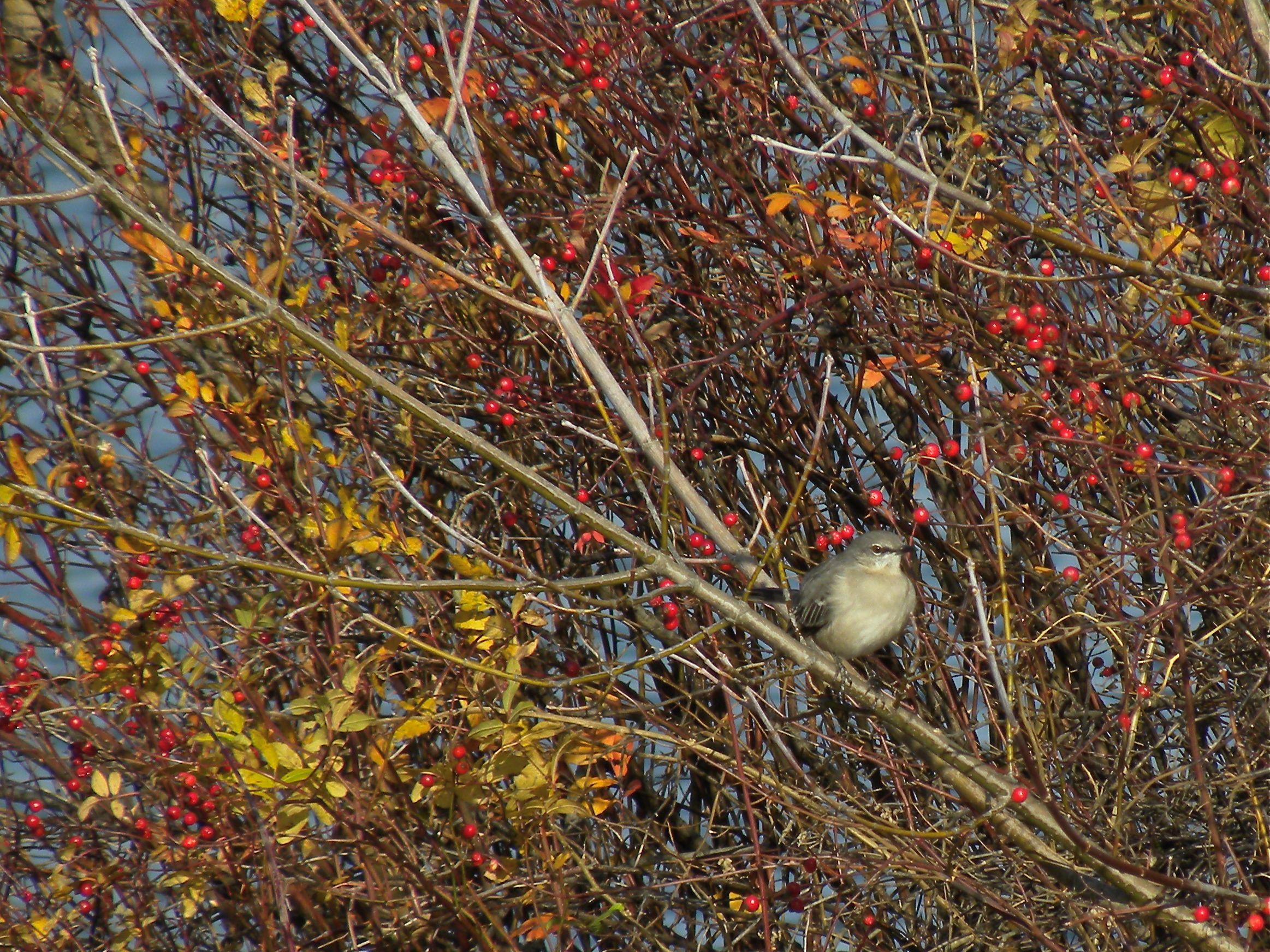
For that performance the mockingbird was my Bird of the Day. There was little else of interest, although a couple of late Red–necked Grebes, a tidy little flight of four Red–breasted Mergansers and an American Kestrel atop a utility pole were nice sightings. And I did see a real Northern Cardinal, but it wasn’t singing; it didn’t need to.
